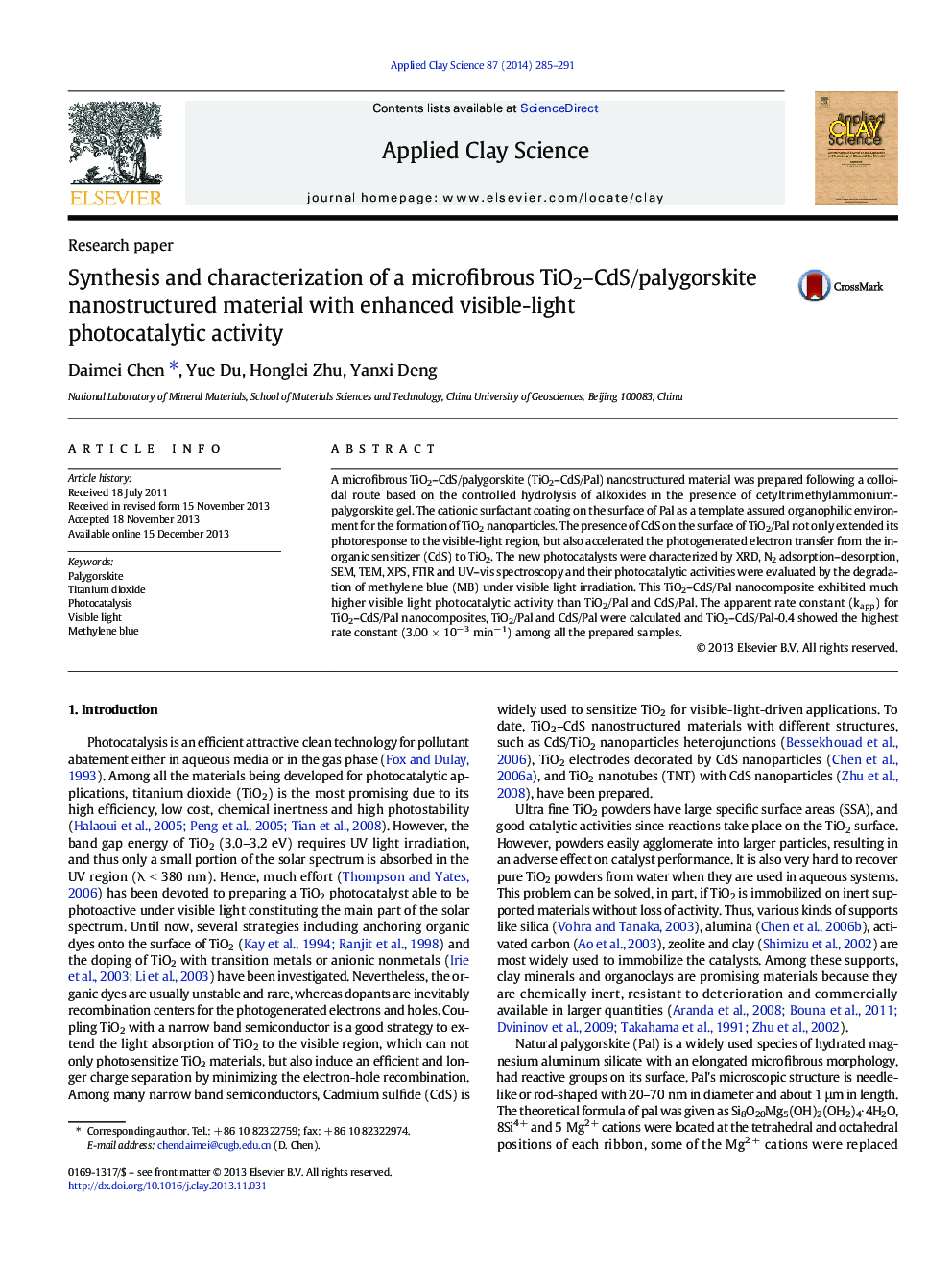| کد مقاله | کد نشریه | سال انتشار | مقاله انگلیسی | نسخه تمام متن |
|---|---|---|---|---|
| 1694977 | 1519087 | 2014 | 7 صفحه PDF | دانلود رایگان |

• A microfibrous TiO2–CdS/attapulgite nanocomposite was prepared.
• Attapulgite modified by CTMAB was used as support for TiO2 nanoparticles.
• CdS immobilization can improve the visible light absorption of the TiO2/ATP composite.
• This new composite exhibited much higher visible light photocatalytic activity.
A microfibrous TiO2–CdS/palygorskite (TiO2–CdS/Pal) nanostructured material was prepared following a colloidal route based on the controlled hydrolysis of alkoxides in the presence of cetyltrimethylammonium-palygorskite gel. The cationic surfactant coating on the surface of Pal as a template assured organophilic environment for the formation of TiO2 nanoparticles. The presence of CdS on the surface of TiO2/Pal not only extended its photoresponse to the visible-light region, but also accelerated the photogenerated electron transfer from the inorganic sensitizer (CdS) to TiO2. The new photocatalysts were characterized by XRD, N2 adsorption–desorption, SEM, TEM, XPS, FTIR and UV–vis spectroscopy and their photocatalytic activities were evaluated by the degradation of methylene blue (MB) under visible light irradiation. This TiO2–CdS/Pal nanocomposite exhibited much higher visible light photocatalytic activity than TiO2/Pal and CdS/Pal. The apparent rate constant (kapp) for TiO2–CdS/Pal nanocomposites, TiO2/Pal and CdS/Pal were calculated and TiO2–CdS/Pal-0.4 showed the highest rate constant (3.00 × 10− 3 min− 1) among all the prepared samples.
Journal: Applied Clay Science - Volume 87, January 2014, Pages 285–291